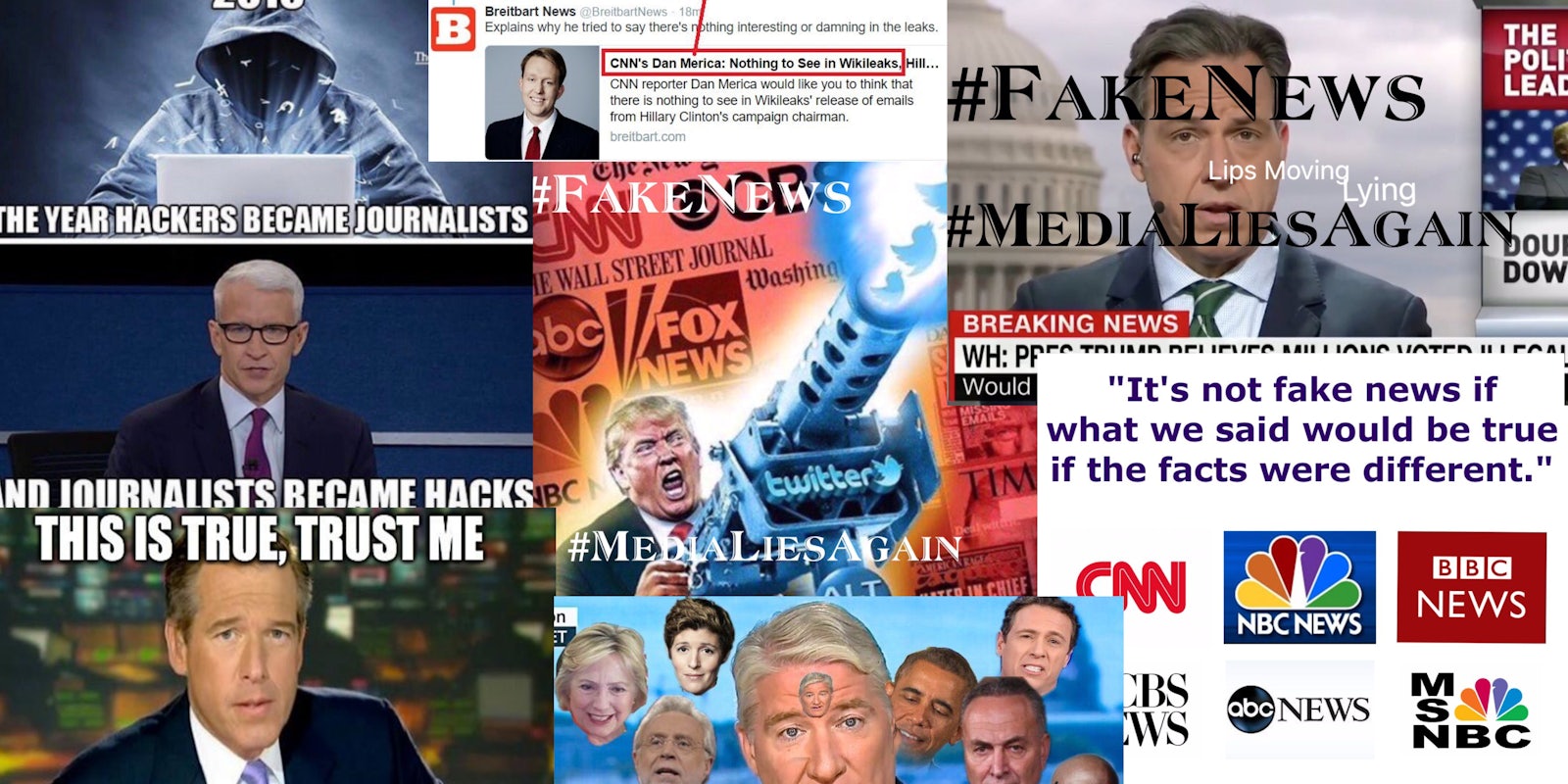The morning after President Donald Trump‘s impromptu White House press conference in which he spent over an hour largely bashing American media as “fake news,” his supporters are doing their part to discredit the Fourth Estate.
Twitter abounds on Friday morning with users posting their complaints about the media—CNN is a prime target, as it is for the president—sending the hashtag #MediaLiesAgain to the number one trending spot in the United States.
Ironically, many of the accounts tweeting the #MediaLiesAgain message come from accounts with only a handful of followers, suggesting they are bots or paid trolls.
Still, many of the tweets are from real people expressing themselves. A common theme among the critical tweets was pointing out coverage of a topic that’s seemingly self-contradicting. The notion relies on a belief that media outlets have a particular agenda and consistently aim to tow that line. It discounts instances when one author takes an opposing stance to another, which often occurs across all types of publications.
#medialiesagain looking at you @HuffingtonPost pic.twitter.com/oCrAxxA8Di
— Kim (@Pespt) February 17, 2017
How do you explain this @Slate? #MediaLiesAgain pic.twitter.com/9JEun42XD8
— CrusaderOfKnowledge (@CrusaderJones) February 17, 2017
Really makes you think.#MediaLiesAgain pic.twitter.com/9WGYcYVHtt
— Evenings Sequence (@Evenings_Seq) February 17, 2017
In other cases, the posts highlight specific authors taking what is seen as hypocritical stances on, say, politicized fashion:
Same author. Same publication. Different political parties. Different standard.#MediaLiesAgain pic.twitter.com/LJlSs9YPIW
— SlobProle (@SlobProl) February 17, 2017
One of the most popular accounts tweeting insults at the press is an account branded the “/pol/ News Network,” a reference to the far-right politics community on 4chan. With over 7,000 followers, this account’s tweets generate hundreds of retweets.
https://twitter.com/polNewsNetwork1/status/832485529698512898
https://twitter.com/polNewsNetwork1/status/832569432207654912
https://twitter.com/polNewsNetwork1/status/832481050131517442
https://twitter.com/polNewsNetwork1/status/832459359099588609
Even supporters of a free and open press cannot discount real and detrimental problems in the media. American’s have a deep distrust of the press. According to the most recent Gallup survey from September, only 32 percent of Americans say they trust the media. Among Republicans only, that number dips to 14 percent, an 18-point drop from the year before.
An Emerson College poll released this month found that Americans narrowly trust Trump more than the media, with 48 percent saying the president is untrustworthy compared to 53 percent who said the same of the media.
The foundation of complaints about the media appears to grow from a variety of factors. One is a matter of how a story is framed in a headline. Take this recent New York Times report about the Trump campaign being in constant contact with Russian officials: The headline sold the story as, “Trump Campaign Aides Had Repeated Contacts With Russian Intelligence.” But three paragraphs in, the story states, “The officials interviewed in recent weeks said that, so far, they had seen no evidence of … cooperation” between Trump’s team and Russian officials coordinating hacks against U.S. political entities. Both the headline and that caveat can be true, of course, but Trump supporters see this as evidence of bias, ignoring the strangeness of Trump’s campaign being in contact with Russian intelligence at all.
Another factor appears to be the differentiation between opinion pieces and “straight news.” In many cases, publications make little distinction. And 24-hour news channels, like CNN, largely rely on “panels” of partisans discussing the news to fill the time between actual breaking news. (Meanwhile, CNN has “Breaking News” graphics on the screen at virtually all times, further confusing things.)
Another factor is a disconnect in what journalists see as the elements of accuracy and what readers perceive as an underlying dishonesty. The Times report above, for example, is likely accurate in its reporting of the facts. But the fact that the paper did not lead with the headline “U.S. Intelligence Finds No Evidence of Collusion Between Trump Team and Russians in Tapped Calls” signals to skeptical readers that the publication is twisting the matter.
Trump, who leads the “fake news” crusade against the media, pointed to this distinction during Thursday’s press conference what he means when he calls the news “fake”—even while lamenting the “absolutely real” leaks from within the U.S government on which many of the stories he condemns are based.
“I see tone. You know the word ‘tone.’ The tone is such hatred,” Trump said. “I’m really not a bad person, by the way. No, but the tone is such — I do get good ratings, you have to admit that — the tone is such hatred.”
In other words, the difference between “true” and “false” is more about feelings and innuendo than the words themselves.


